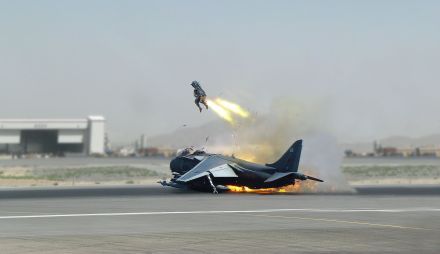Another doctor has recently used parachutes as an example of why some medical treatments don’t need to be tested before using them on patients. That historical claim is wrong.
Arguing for “The search for perfect evidence may be the enemy of good policy,” Greenhalgh, a physician and expert in health care delivery at the University of Oxford, fumed in the Boston Review. “As with parachutes for jumping out of airplanes, it is time to act without waiting for randomized controlled trial evidence.” [emphasis added]….
COVID-19, she argues, has revealed the limits of evidence-based medicine—masks being a potent case in point.
The United Kingdom’s mask crusader
Ellen Ruppel Shell
Science 16 Oct 2020: Vol. 370, Issue 6514, pp. 276-277
DOI: 10.1126/science.370.6514.276
A 2003 article in British Medical Journal claimed after a literature search that “No randomised controlled trials of parachute use have been undertaken,[sic]” and went on to claim that “Individuals who insist that all interventions need to be validated by a randomised controlled trial need to come down to earth with a bump.” This is nonsense. Parachutes were heavily tested by the British air force late in WW I, for example. The issue was controversial at the time because German pilots already had parachutes, and the British military was slow to adopt, perhaps because of NIH (Not Invented Here). Continued trials delayed deployment until after the war was over.
Jet ejection seats, a “super-parachute” invented in the 1940s, received comprehensive engineering tests as various designs were experimented on. Tests ultimately included multiple human trials with volunteers. Despite that, many pilots at the time were hesitant to trust them, but field experience (and lack of alternatives when you were about to crash) led to still-reluctant acceptance. The reluctance stemmed from the dangers of ejection – severe injuries were common, due to high accelerations, collisons with pieces of the aircraft, and so forth. Continued experimentation at many levels (simulations, scale models, dummy pilots, etc.) have led to many improvements over the early designs, and most pilots who eject now are not permanently injured.

So parachutes have been, and new designs continue to be, heavily tested. Perhaps the 2003 authors missed them because they did not search obscure engineering and in-house journals written decades before the Internet. What about the “controlled” part of Randomized Controlled Trials? They had not even been invented in 1918; R.A. Fisher’s seminal work on experimental statistics was done in the 1920s and 30s.
More important, engineering trials have something better than randomization: deliberate “corner tests.” With humans and diseases we don’t know all the variables that affect treatment effectiveness, and even if we knew them, we couldn’t measure many of them. But with engineered systems we can figure out most key variables ahead of time. So trials can be run with:
- Low pilot weight / high pilot weight
- Low airspeed/high airspeed
- Low, intermediate, and high altitudes
- Aircraft at 0 pitch and yaw, all the way to aircraft inverted.
- Delayed or early seat ejection.
- Testing prototypes (and now, finite element simulations) can tell us which conditions are most extreme, so not all corners need full-scale tests.
Of course some of these tests will “fail,” e.g. early ejection seats did not work at low altitude and airspeed. Those limits are then written into pilots’ manuals. That is considerably better than we do with many RCT’s, which deliberately choose trial subjects who are more healthy than patients who will ultimately take the medicine.
So let’s stop using this analogy. Parachutes were never adopted without (the equivalent of) RCTs. Thereare many reasons to adopt masks without years of testing, but this is not one of them.
(I have written more about this in my book draft about the evolution of flying from an art to a science.)





